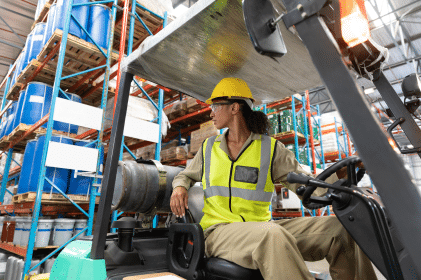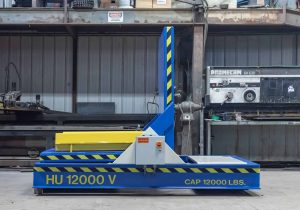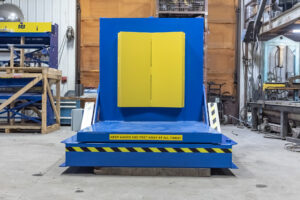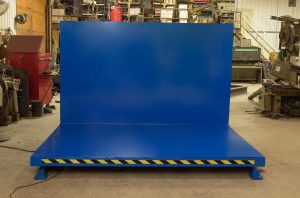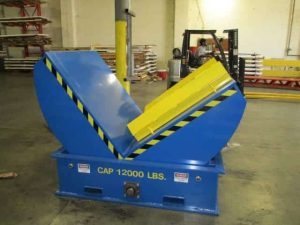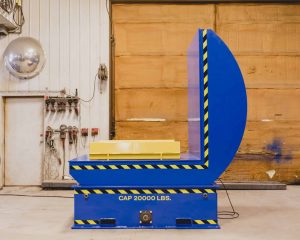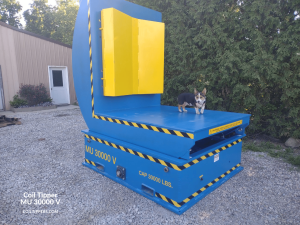Over the past decade, there has been a continual vision of an unmanned warehouse, with automated lift trucks moving pallets into position, taking product out, and placing onto a conveyor for automated sorting and delivery.
What that vision often does not describe is the journey forklift manufacturers are currently making in terms of equipment safety – both as they work toward that vision as well as improving operator safety for today’s applications.
Data from the National Safety Council (which also included order pickers and powered platform trucks) found that in 2020, there were 78 fatalities linked for forklift operation, as well as 7,200 nonfatal injuries severe enough to cause time away from work.
As the industry has expanded, the injury rate per 10,000 workers has remained consistent over the past decade, wavering between 0.7 and 0.8 each year since 2011. This data also does not include incidents where the operator was not hurt, but where the product or equipment it was moving was damaged.
But taken together, it reinforces the concept that material handling equipment safety is an area where emphasis is needed.
Improving Safety a Complex Dynamic
Safety within material handling equipment is a multi-faceted focus area which touches almost every aspect of equipment operations and use – extending down to the base component level and then back upstream again.
At the core design level, data from position, tilt, and pressure sensors can help operators determine when a load may be too heavy for a given piece of equipment or pick, given the position of the forks and other factors.
Additional design and specifications around core operator controls components, such as joysticks and controllers, is also needed. New EN1175 standards for lift trucks essentially require functional safety or at least redundancy at the component level for these material handling applications.
A focus on safety can also extend into the incorporation of greater telematics and machine data – mandating that equipment will only be operational for operators who have completed the proper training and ensuring that OSHA checklists and other procedures are followed effectively.
Improving Safety Outside the Vehicle
That safety focus also extends outside of the vehicle itself and out into the larger warehouse or other environment, which can manifest in several different approaches toward providing operator assistance and support.
In many warehouses, beacon technology integrated into various aspects of the larger environment can help define the boundaries of different areas – enforcing reduced speeds in high-traffic areas or alerting lift truck operators as they approach another piece of equipment which may not be in their normal field of vision.
 Vision cameras, radar and other sensing technologies are also providing valuable driver assistance technologies. Camera systems can monitor operator behaviors to ensure they are not distracted during operations, while radar systems can provide effective obstacle detection for material handling applications.
Vision cameras, radar and other sensing technologies are also providing valuable driver assistance technologies. Camera systems can monitor operator behaviors to ensure they are not distracted during operations, while radar systems can provide effective obstacle detection for material handling applications.
Object detection platforms can also serve as the basis for the initial steps toward automation – with blind spot monitoring systems tied into the vehicle bus to provide audible alarms – and even automatic braking – when approaching a pedestrian, obstruction, or another vehicle.
While these “Level 1” autonomy functions are still multiple steps away from a fully automated forklift system, they provide the initial steps on that roadmap.
Vision of Future Warehouses Needs Flexibility
While autonomous lift trucks will likely not require the same level of scrutiny as on-road passenger vehicles, there still will be a variety of safeguards and regulatory requirements as different features are introduced – each of which will have its own secondary impacts and other follow-on changes. That means that the design frameworks around these platforms need to remain flexible and open to account for future roadmap changes as the industry continues to shift.
Given how many eCommerce supply chains are targeted at facility throughput, autonomous systems may initially roll out as supplemental tools before being used for all tasks within a warehouse.
Regardless as to what level of autonomy the market accepts – and how long it takes to achieve it – the overriding goal of safety will run throughout the industry.

